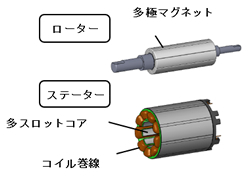2023-03-22 インペリアル・カレッジ・ロンドン(ICL)
◆イギリスのインペリアル・カレッジ・ロンドンの研究者たちは、環境温度が蜜蜂の生存と作物の受粉に重要な一連のバンブルビー行動を変化させる農薬の影響度合いに影響を与えることを示しました。
◆この研究では、2つの農薬(ネオニコチノイドであるイミダクロプリドとスルフォキサフロール)を3つの温度(21、27、30°C)で使用し、6つのバンブルビー行動を調べました。4つの行動(反応性、移動確率、歩行速度、食物摂取速度)は、低温でイミダクロプリドによってより強く影響を受けました。これは、巣の任務に重要な行動に対する農薬の毒性が寒波で増加する可能性があることを示唆しています。
◆しかし、最も重要な行動である飛行距離は、最高温度でイミダクロプリドによって最も強く影響を受けました。この関係は急激に低下し、21°Cから27°Cまでは飛行距離が同じであり、30°Cに達すると急激に低下しました。
<関連情報>
- https://www.imperial.ac.uk/news/243851/changing-temperatures-increase-pesticide-risk-bees/
- https://onlinelibrary.wiley.com/doi/10.1111/gcb.16671
毒のある温度: ハチの行動は、温暖化によって異なる農薬の毒性関係を示す Toxic temperatures: Bee behaviours exhibit divergent pesticide toxicity relationships with warming
Daniel Kenna, Peter Graystock, Richard J. Gill
Global Change Biology Published: 21 March 2023
DOI:https://doi.org/10.1111/gcb.16671

Abstract
Climate change and agricultural intensification are exposing insect pollinators to temperature extremes and increasing pesticide usage. Yet, we lack good quantification of how temperature modulates the sublethal effects of pesticides on behaviours vital for fitness and pollination performance. Consequently, we are uncertain if warming decreases or increases the severity of different pesticide impacts, and whether separate behaviours vary in the direction of response. Quantifying these interactive effects is vital in forecasting pesticide risk across climate regions and informing pesticide application strategies and pollinator conservation. This multi-stressor study investigated the responses of six functional behaviours of bumblebees when exposed to either a neonicotinoid (imidacloprid) or a sulfoximine (sulfoxaflor) across a standardised low, mid, and high temperature. We found the neonicotinoid had a significant effect on five of the six behaviours, with a greater effect at the lower temperature(s) when measuring responsiveness, the likelihood of movement, walking rate, and food consumption rate. In contrast, the neonicotinoid had a greater impact on flight distance at the higher temperature. Our findings show that different organismal functions can exhibit divergent thermal responses, with some pesticide-affected behaviours showing greater impact as temperatures dropped, and others as temperatures rose. We must therefore account for environmental context when determining pesticide risk. Moreover, we found evidence of synergistic effects, with just a 3°C increase causing a sudden drop in flight performance, despite seeing no effect of pesticide at the two lower temperatures. Our findings highlight the importance of multi-stressor studies to quantify threats to insects, which will help to improve dynamic evaluations of population tipping points and spatiotemporal risks to biodiversity across different climate regions.



